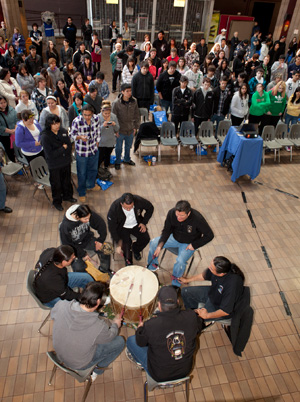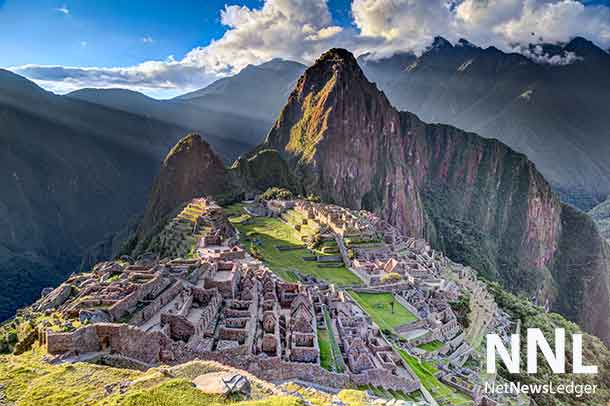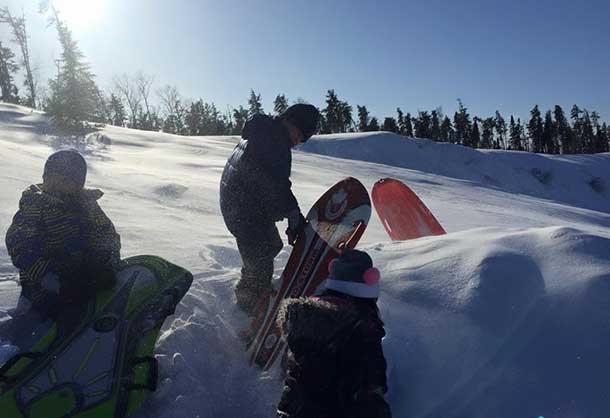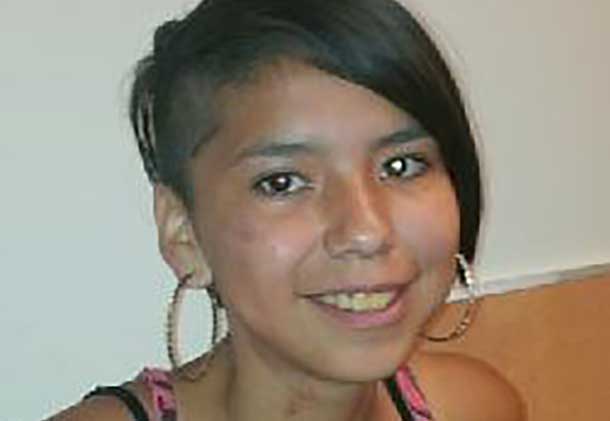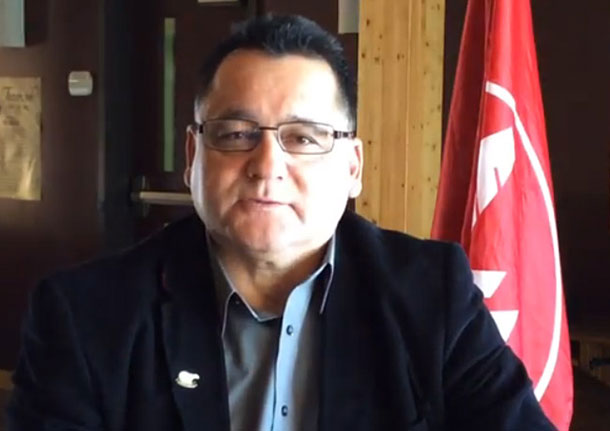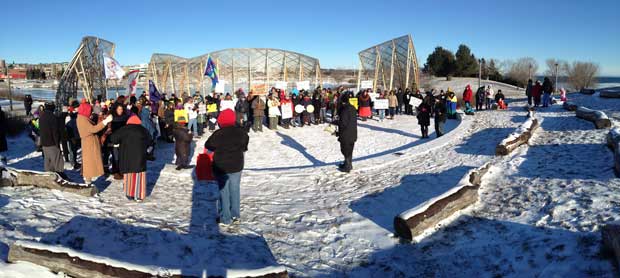
THUNDER BAY – Editorial – I often reflect why we as indigenous people have not made the rightful distance and progress towards the empowerment of our Nations and communities as we rightly should — given the time and resources that fuel the engines of our collective efforts.
When we do arrive at the destination of the day, I wonder (with a shade of frustration) why it has taken so very much time… just past an inch an hour… to arrive at the line drawn by our shared aspirations.
I often reflect
Many are aware of the challenges we face and just as many are aware of the solutions where we must arrive.
So my Relatives, what’s the deal?
The crux just may be that our efforts are rarely “collective” and our aspirations are not as “shared” as they could be (and rightfully should be) in these days of challenge which could be days of opportunity.
Breaking the Spell
Our divisions among each other, within and between our communities, within and between our families, within and between our nations, and within and between any number of criteria that we far too frequently adopt (and far too easily internalize) must end.
And they must end. Now.
These divisions are not only in full opposition to what we must strengthen if we wish to build better tomorrows for our families, youth, and future generations, but they blatantly (and effectively) disempower, dilute, deflate, and disparage any meaningful forward motion and any powerful movement, regardless of how dynamic they may be in theory and in potential.
Take a moment and consider the following;
How many times have you been told (or have said) that “those people” from “that Rez” or “that community” are trouble, aren’t as great or as worthwhile as “those” from “your own” community, or just aren’t worth a damn, period?
And “those half-breeds and half-bloods,” not to mention that “those damn quarter bloods” or “mixed bloods” aren’t “as Native” as you?
How many times have you heard “that family,” “those people” in “that damn family” are trouble and “we” don’t talk to “them” because our family just doesn’t anymore?
And “those off-reserve members” are not “real” community members and “their” opinions do not hold value — or conversely, stay off “that goddamn rez” because “we’re” in the city and “we’re” better than “that?”
And, forget what’s happening to “those Natives in the States” because we have our own problems “here in Canada?”
“Light skinned… dark skinned.”
“More spiritual, less spiritual, more cultural, less cultural, or those stupid non-believers.”
“More educated, less educated, just an academic, sheltered because they never left the boundaries of that Reserve.”
“Ugh, he speaks like he’s never been anywhere but the bush” or “she speaks ‘too white’ with those 50-dollar words.”
“Damn men, damn women.”
“Too old, too young.”
“Can’t stand those goddamn Metis.” “Who cares if they’re Native; they’re not status, therefore they don’t belong here and do not count.”
My Friends and Relatives, these above are the common attitudes and normalized philosophies that are defining our relationships with each other.
If they are allowed to define us any longer, how can they not define or continue to impact our active involvements, our progressive and social movements, and our efforts of resurgence and revitalizations if the very nature of each are fuelled by (and contingent upon) our relationships?
Even if a (figurative) 10 million indigenous people made the decision and commitment towards long-term, progressive involvement and goals; just how far would such a beautiful wave of dedication and potential for change move if the philosophies quoted above actively and consistently immersed and submerged the very nature of relationships involved?
Perhaps an inch per hour?
And the intoxicating spell I wish to address and break is this:
Each criteria that we actively adhere to and divide across are not of our own creation (including the irony of purposive terminology in the title of this article), but instead those which have been imposed upon our people and communities to which we jump when each whistle has been blown.
And we divide as directed.
The reserve system and the immobilizing boundaries of each are not what we created. They were placed upon our Nations and have had a dividing effect where we see ourselves as different from our own by such drawn boundaries that were not our own or our choosing. We divide even further from each other — between those who have made the decision to live on Reserve or those who may try to make a living in the City or Suburbs, seeing each other as different based upon the reserve borders.
The pedigree of blood percentage and matters such as the Second-Generation Cut clause within the Indian Act (and the 6-1, 6-2 concepts that convince us that a three-quarter blood is not as much “an Indian” as a six-eighth blood or quarter-blood) and Blood Quantum (kept intact by the Bureau of Indian Affairs) have never been our own; they were placed upon us to dismantle our connection to our treaties and identity – yet we divide across such imposed ideas and criteria.
There was a time when we did not have last names nor did we retain the internalized oppression between our families to which we fight (who are all equally parts of our Nation as all others), but we continue to divide over what was imposed by Indian Agents and various policies and legislations.
The national lines scrolled by Canada and the United States were imposed, but somehow we trick ourselves into seeing each other across such boundaries as a different People regardless of our Nations or Clans. Again, we divide based upon foreign-imposed criteria.
Some have said jump and we’ve said little beyond “How high?”
How much longer?
It isn’t long until that figurative 10 million-plus potential for a tsunami of progress mentioned above becomes a situation of little support, lateral violence, in-fighting, making little distance, and reminiscent of crabs holding each other down in a barrel.
Just how paralleled are these realities to West Indian slave-owner Willie Lynch’s contested 1712 address to the Virginia colonists regarding how to control plantation slaves by means of division?
Or perhaps the inarguable Belgian-created classification systems between Rwandans that kept them divided and controlled?
This is not to say to say legislative mechanisms of control and manipulation (such as the Indian Act) have a devastating effect on our timely movements forward, but the spell we are bound by (which I am addressing here) is one that is in our complete control to break today so that such structural mechanisms may be dismantled tomorrow.
An elder in Kenora once told me that our divides created by imposed, foreign criteria is much like a priest taking a handful of penny-candy out to the playground next to a Residential School, throwing it out into the grass, watching all the children fight and tear each other apart trying to get theirs, and while they are distracted, he takes them away into the priest’s quarters.
One by one.
One by one.
A (di)Version of (di)Vision
In the relationships between one another (indigenous and non-indigenous) is another dynamic which continues to be disrupted as many of us are born into a situation that we did not cause, create, or choose, but instead inherited a multi-generational falling of the dominoes which maintain — and often deepens- and illegitimate division between us today.
They are crafted by many of the dynamics above — each deserving our best efforts to close such divides in order to heal the relationship.
We are at a time of promise where days of division (so frequent that it is accepted as common reality) must become a footnote of the past — or at least minimized to the point where it does not define our relationships with each other and our efforts — if we wish to truly stand beside our unborn, walk alongside our ancestors, and ensure the continuity of our Nations and ourselves, and choose to heal the relationships between our communities and Nations, defined by a revitalized unit and partnership within our Nations, internally and externally.
One needs to look no further than the indigenous social and political mobilization occurring each month, the identification of challenge and solutions in which to point the bow of our ships, the eyes of the world upon Canada regarding the neglect of communities such as Attawapiskat, UNDRIP, the rapid interventions and monitoring of “subversives” and uses of informants, the preparations by federal and provincial agencies, the social awakening and understanding of the root issues that maintain inequality, and the growing justified tension and awareness in order to understand one simple fact… Change is coming.
Change is coming.
Together, we can direct it.
Together, we can influence the nature of it.
Together, we can guide it.
However, we cannot deny or alter the fact that change is well on its way.
Will we control the change or let change control us?
If a time of change and challenge is to truly become a window of progress and true opportunity, we must meet it undivided where our shared dreams and common ground become shared efforts with a common purpose .
This is not to say that our diversity between our Nations must be viewed as homogeneous, Pan-Indianist (which in itself would be disastrous in the “Aboriginalism” sort), but our continued divisions and disunity must end among our indigenous people who share and face the very same undivided and unified challenges.
Drawing the Only Needed Line in the Sand
The only significant division and “line in the sand” must be between that which will empower or disempower our communities in the long run… that which will help us stand strong or continue to break our knees to keep us on the road of manufactured self-destruction.
Given the legacy, reality, and (you can bet future) legislations and policies by Canada that bolster the injuring of our sovereign Nations, resources, and identities, there are two choices;
We can either work together and move forward together or meet the end and witness the end of so much — together.
In the history of the world; the awareness of the true power of a population (which is not a governing body, but the population limited in division and unified of a purpose in mind) as the power for change has been the very spark for social change.
This has been the simple realization, tied to action and endurance, that has collapsed and capsized tyranny, strengthened internal and external relationships and partnerships, inverted the corruptions of Nations, and made history.
The continuous worldwide movements and Arab Spring (as well as Idle No More) against corruption should make this very clear.
In the end, it comes down to choosing the diversion of division — or a version of vision.
One which we all share.
What do we choose?
Let’s roll.
Robert Horton

